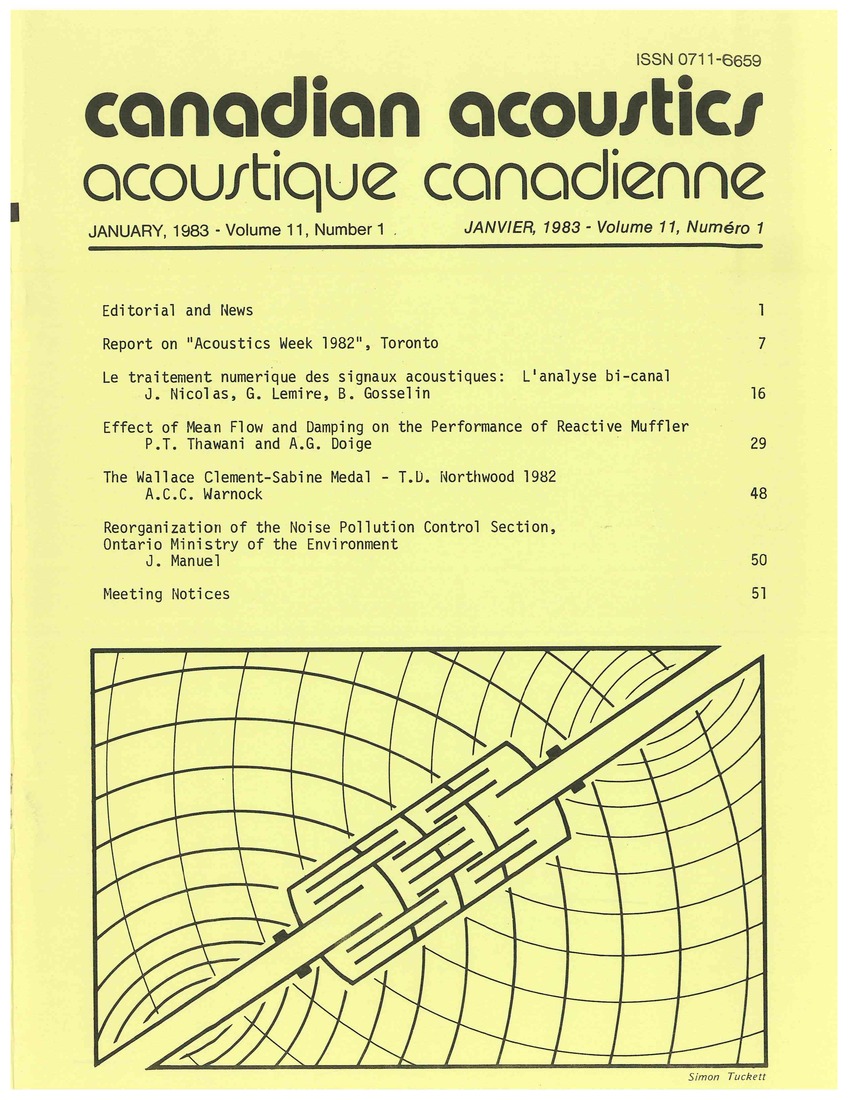Effect of mean flow and damping on the performance of reactive mufflers
Keywords:
noise abatement, mean flow, damping, reactive mufflers, mathematical modeling, exhaust mufflers, plane wave propagation, transfer matrices, noise reductionAbstract
Inclusion of mean flow effects in the mathematical modeling of exhaust mufflers has been found to be essential for achieving realistic results. Two mathematical models are presented which apply to plane wave propagation through a pipe or an expansion chamber including the effect of mean flow and damping. The solutions of the governing equations are represented by 2×2 transfer matrices. In evaluating the performance of exhaust mufflers, noise reduction (NR) is calculated using an open end termination. The measured NR characteristics of the tested laboratory mufflers are in excellent agreement with those predicted by the transfer matrix approach. The method of NR calculation is quite general in its application and can be extended further to optimize muffler configuration at the design stageAdditional Files
Published
How to Cite
Issue
Section
License
Author Licensing Addendum
This Licensing Addendum ("Addendum") is entered into between the undersigned Author(s) and Canadian Acoustics journal published by the Canadian Acoustical Association (hereinafter referred to as the "Publisher"). The Author(s) and the Publisher agree as follows:
-
Retained Rights: The Author(s) retain(s) the following rights:
- The right to reproduce, distribute, and publicly display the Work on the Author's personal website or the website of the Author's institution.
- The right to use the Work in the Author's teaching activities and presentations.
- The right to include the Work in a compilation for the Author's personal use, not for sale.
-
Grant of License: The Author(s) grant(s) to the Publisher a worldwide exclusive license to publish, reproduce, distribute, and display the Work in Canadian Acoustics and any other formats and media deemed appropriate by the Publisher.
-
Attribution: The Publisher agrees to include proper attribution to the Author(s) in all publications and reproductions of the Work.
-
No Conflict: This Addendum is intended to be in harmony with, and not in conflict with, the terms and conditions of the original agreement entered into between the Author(s) and the Publisher.
-
Copyright Clause: Copyright on articles is held by the Author(s). The corresponding Author has the right to grant on behalf of all Authors and does grant on behalf of all Authors, a worldwide exclusive license to the Publisher and its licensees in perpetuity, in all forms, formats, and media (whether known now or created in the future), including but not limited to the rights to publish, reproduce, distribute, display, store, translate, create adaptations, reprints, include within collections, and create summaries, extracts, and/or abstracts of the Contribution.


